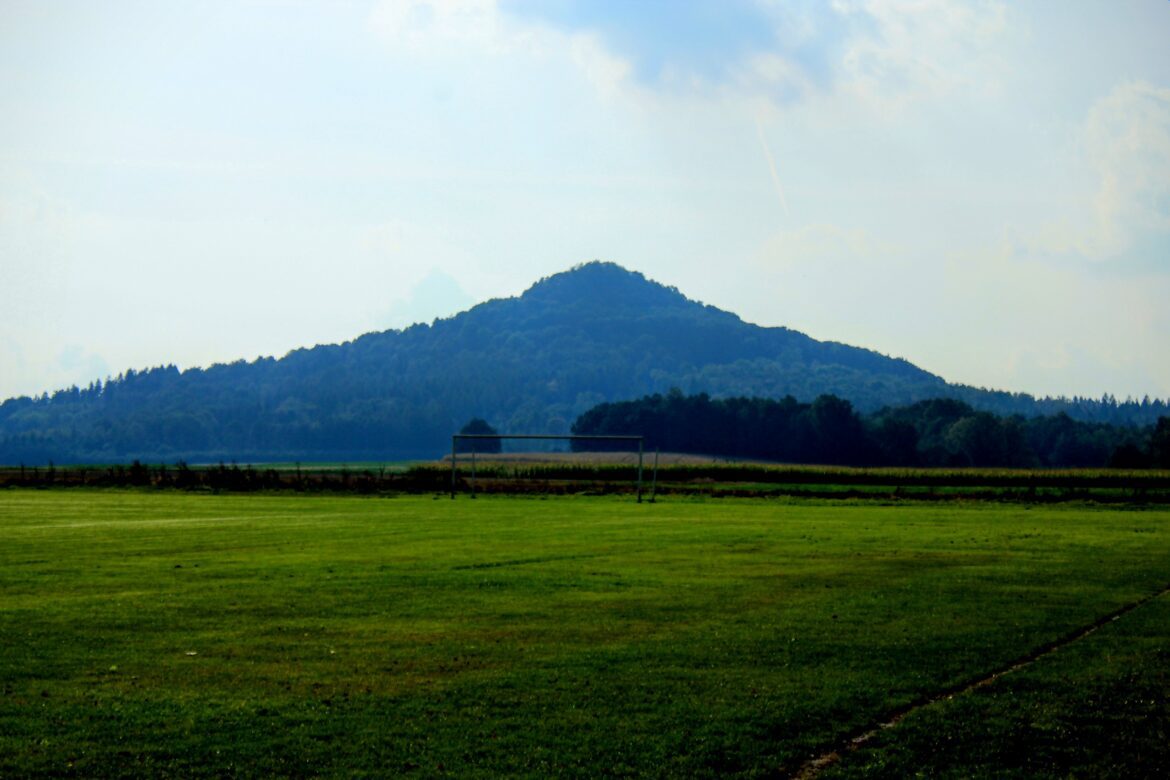Poland is full of remarkable tourist attractions that often stand outside of the main track. On the one hand, this is an advantage, because there are not many tourists there, what often negatively affect the perception of the place, and on the other hand, it is a pity that so few people know about them…
For this reason, we would like to take you on a little trip to the volcanoes. Yes, exactly. Poland is home to extinct volcanoes, some of which were able to make quite a mess millions of years ago.
Currently, after so many years of corrosion, their highest representative barely exceeds 500 metres above sea level, with an elevation of around 150 metres. Not so much, is it? However, their conical figure stands out brilliantly among the fields and what can make there is a little out of breath when climbing a few of them (both due to the views and the steep ascent). The largest concentration of extinct volcanoes is in Lower Silesia in the Kaczawskie Mountains.
The Route of Extinct Volcanoes and the Land of Extinct Volcanoes, stretching from Legnickie Pole to Zlotoryja, were even created there. For this reason, we travelled around Lower Silesia to conquer 11 peaks of volcanic origin that shaped the area over 18 million years ago. We think this is a good introduction to discovering the mysteries of Lower Silesia, isn’t it?
Besides, these low mountains were the ideal ones to hike during pregnancy and on expeditions with little children, so we have created a comprehensive post listing these volcanoes. Perhaps they will be the first mountains you conquer with your own child?
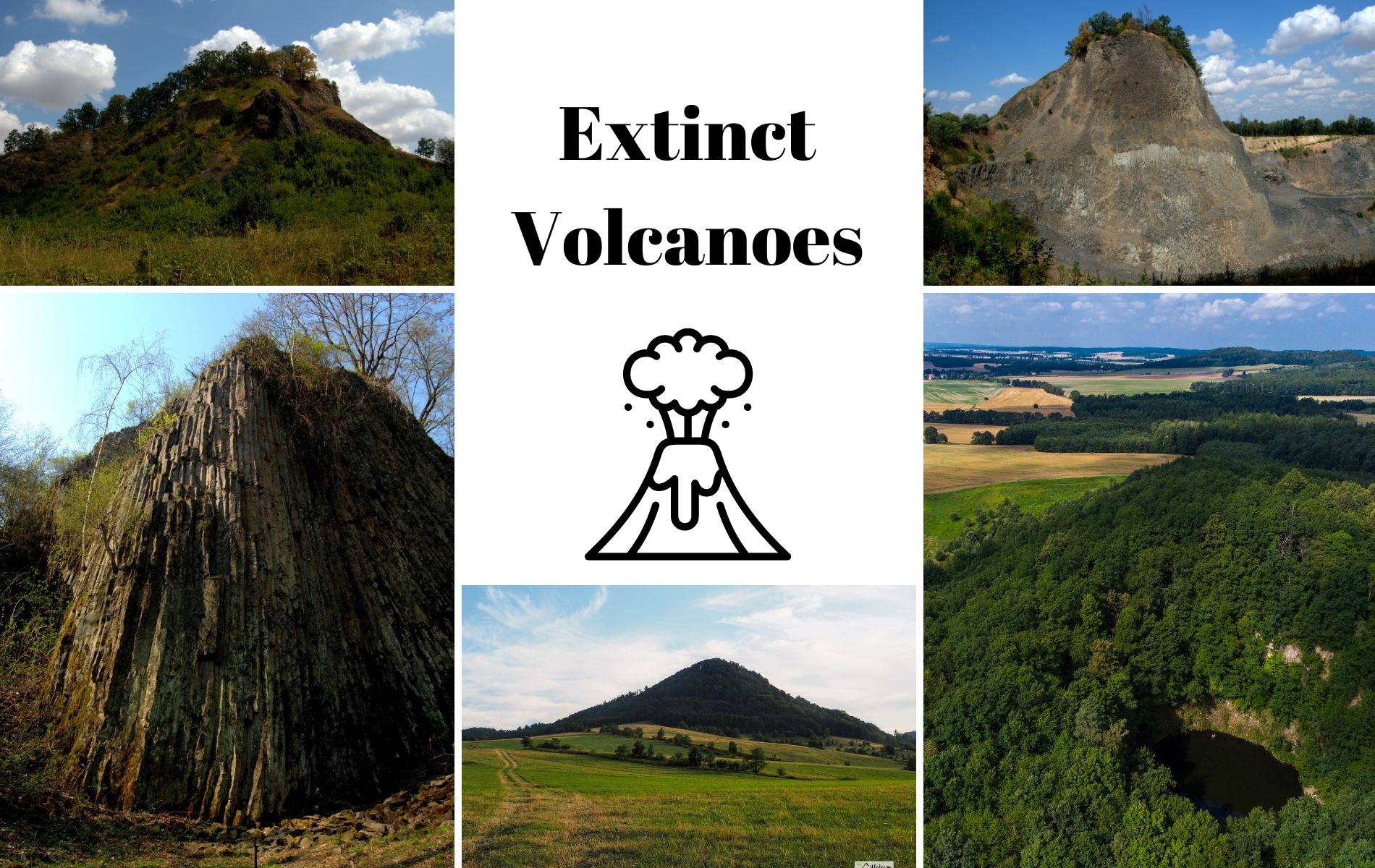
Ostrzyca (Proboszczowicka) - the highest extinct volcano in Poland
The highest and at the same time the most popular extinct volcano in Poland is Ostrzyca (Proboszczowicka), also often called the Silesian Fujiama. It is located in the Kaczawskie Mountains near the village of Proboszczów, and as we wrote above, it rises 501 metres above sea level with an elevation of 150 metres. This is an altitude that you should be able to climb with a small child, especially as there is a well-developed recreational area at the bottom of Ostrzyca, with places to make a campfire and a covered shelter.
What else can you see on Ostrzyca? As you approach the summit, you will see the characteristic basalt glacis, which is under strict protection due to the unique vegetation that covers it. At the very top of the extinct volcano, there is also a beautiful viewpoint in the form of exposed rocks. After climbing them, you can enjoy a wide panoramic view of the surrounding area.
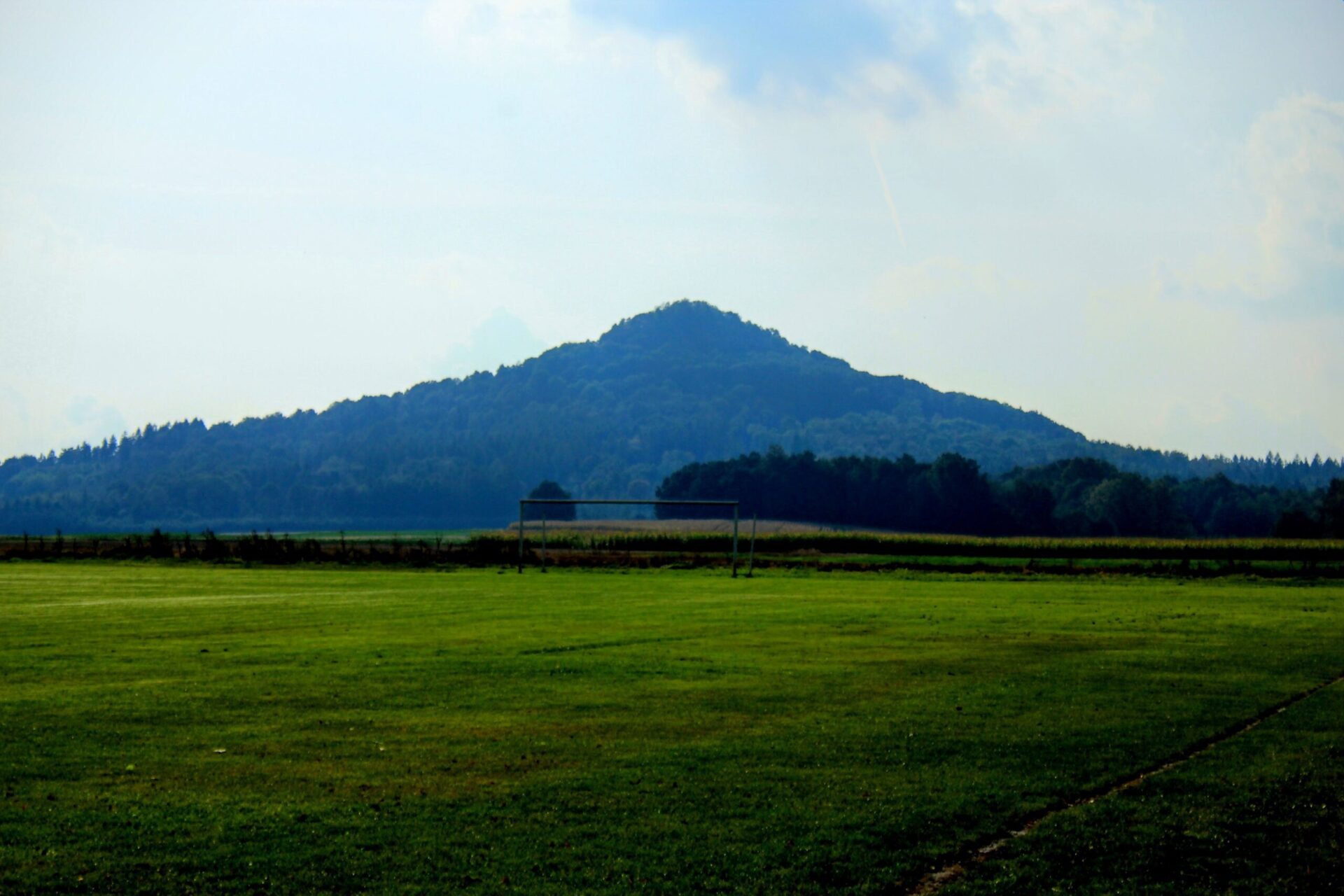
#2 Grodziec - Grodziec Castle situated on top of an extinct volcano
Due to their specific shape, extinct volcanoes were often considered as a strategic defensive site. Excellent visibility, difficult and steep access to the summit meant that a timber and timber-earth castle was built around the 12th century, which was later rebuilt as a brick castle by Henry the Bearded. As in the history of most castles in Lower Silesia, the idyllic prosperity was disturbed by the time of the Hussite wars.
Grodziec castle also fell victim to it and its reconstruction began in 1470s. Over the next hundred years, the castle was extended and twice destroyed. The last historic devastation of the castle was caused by the Russians, who burnt it down in 1945 and it was not until the 1960s that work was undertaken to repair it.
Nowadays Grodziec Castle is a beautiful building fully adapted for tourism and the numerous themed events held on their grounds. Visitors can enjoy the large courtyard, the castle fortifications, the observation tower with its breathtaking views and the residence itself with its beautiful knightly chambers. After visiting Grodziec, it topped our personal list of favourite castles in Lower Silesia. Why? Because it is one of the few to have the character of a truly knightly castle and to provide beautiful views from both the fortifications and the viewing tower.
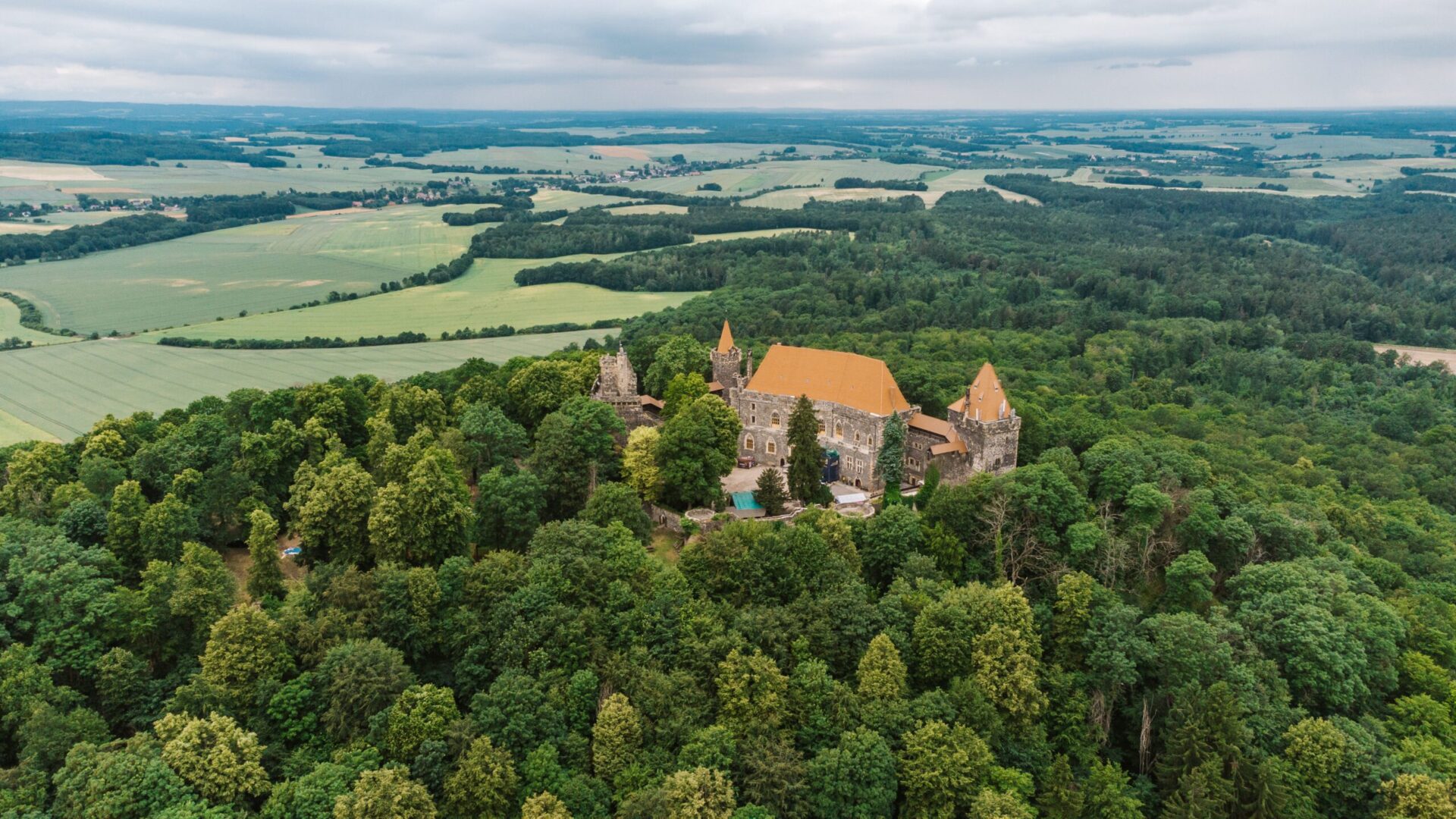
#3 Small Mysliborskie Organs and the extinct volcano Rataj
The Small Organs of Mysliborz is in fact the exposed side of an extinct volcano named Rataj, 350 metres above sea level. It is located near Myślibórz in the Chełmy Landscape Park. Conquering the volcano itself will certainly not be a challenge for a person experienced in mountain hiking, as Rataj is, in our opinion, the least demanding of all the peaks of post-volcanic origin. However, it is worth a visit because of its exposed volcanic chimney and solidified lava forming distinctive vertical columns. Perhaps you are wondering how such a beautiful creation has been formed? Well, there used to be a basalt mine here, which created this pit and uncovered the interior of the volcano, which today forms a monument of inanimate nature.
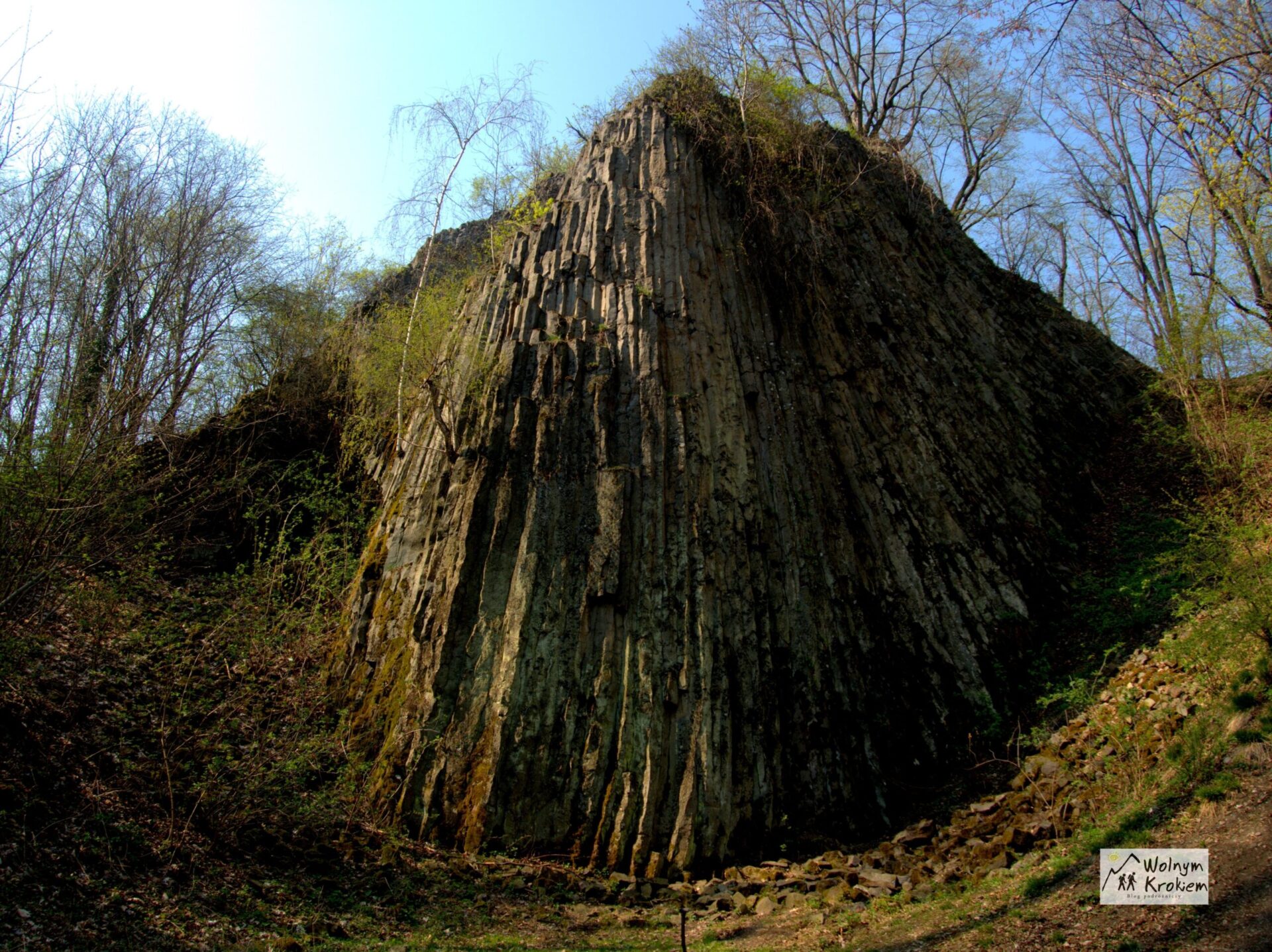
#4 Extinct volcano Werewolf (Wolf Mountain)
Another extinct volcano that is quite a discovery for us is Wilkołak, also known as Wilcza Góra. It is located near Złotoryja in the vicinity of the village of Wilków. We decided to reach it more from the Jerzmanice-Zdrój side using the green trail, but to our surprise it led us nowhere. The mountainside is still an active basalt quarry and many of the paths have been fenced off making further hiking impossible. However, it is possible to get to the top without crossing any entanglements and it really is worth a little exploration.
The upper part of the Werewolf, protruding majestically on the horizon resembling the muzzle or ears of a wolf, is a brilliant vantage point. The climb to its summit, however, is not the safest and we certainly do not recommend going there with children. There is a very steep and slippery ascent, and each slope of the summit ends in a wall of several tens of metres. We did not meet any other hikers on the trail itself, so if you fancy a moment of solitude and seeing the beautiful views, we recommend conquering this extinct volcano.
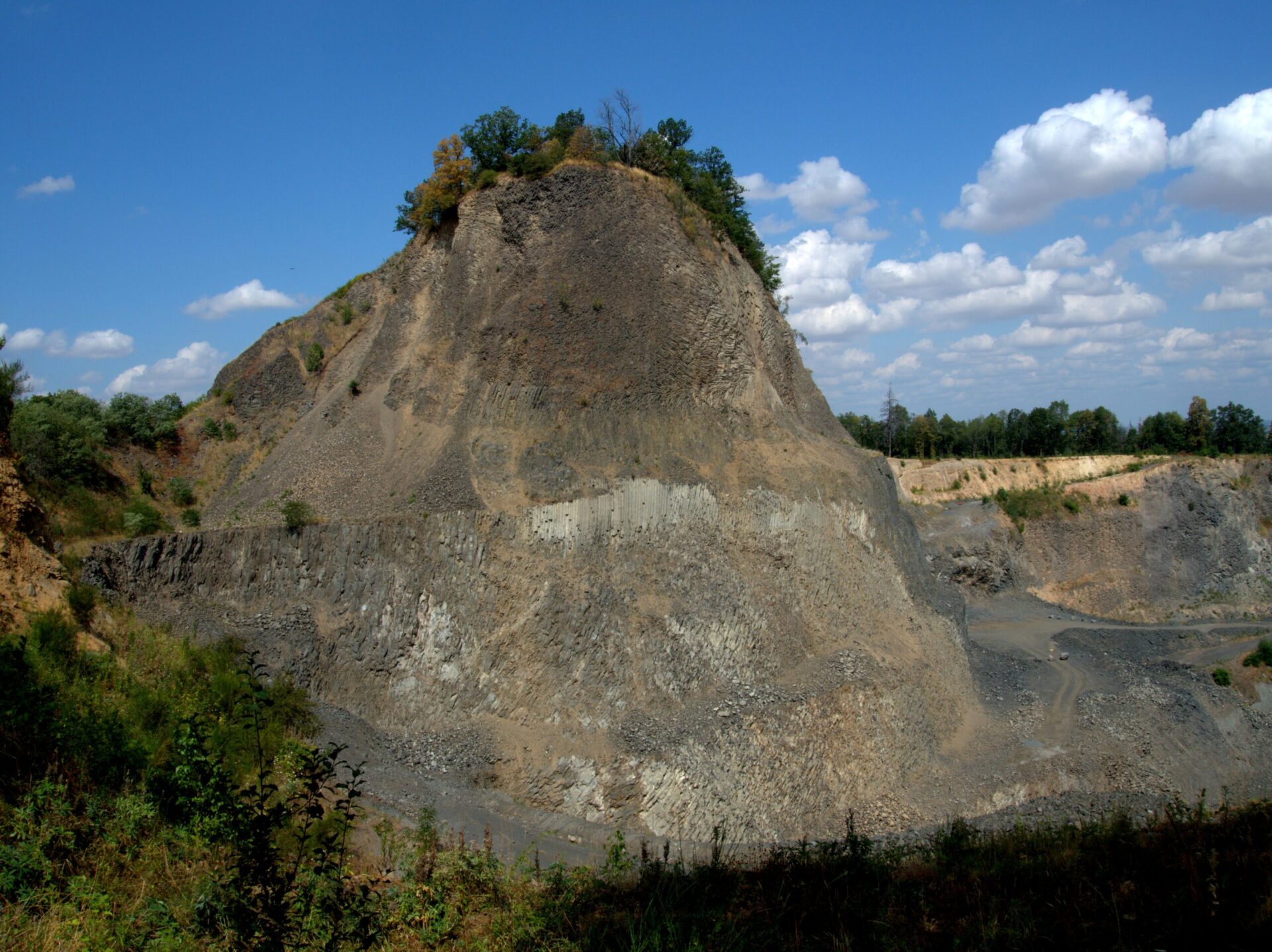
#5 The extinct volcano Wielislawka and the Wielislawski Organs
Wielislawka is another volcano that has been 'torn up’ by man in search of ore that can be used in construction (particularly porphyry). The Wielisławka volcano is located near the village of Sędziszowa and it should not take more than 30 minutes to climb it. It is therefore a very good peak to combine with other attractions nearby. It is also worth mentioning that at the top of the volcano, there are also remains of a castle, probably dating back to the 12th or 13th century, which in its time was a strategic defensive point due to its location between the important trade route between Jelenia Góra – Złotoryja and Legnica.
As we mentioned, one day everything that is beautiful comes to an end and in the case of castles, it was often the period of the Hussite wars. After these events, the control of the fortress was taken over by robbers, who were the bane of the post-war period. The end of the castle came in the 15th century, leaving only a few walls and foundations, which we can admire today. What is certainly missing from this volcano is an observation point. It used to be possible to observe the surroundings from the top of Wielislavka, but the growing tree crowns cover any view.
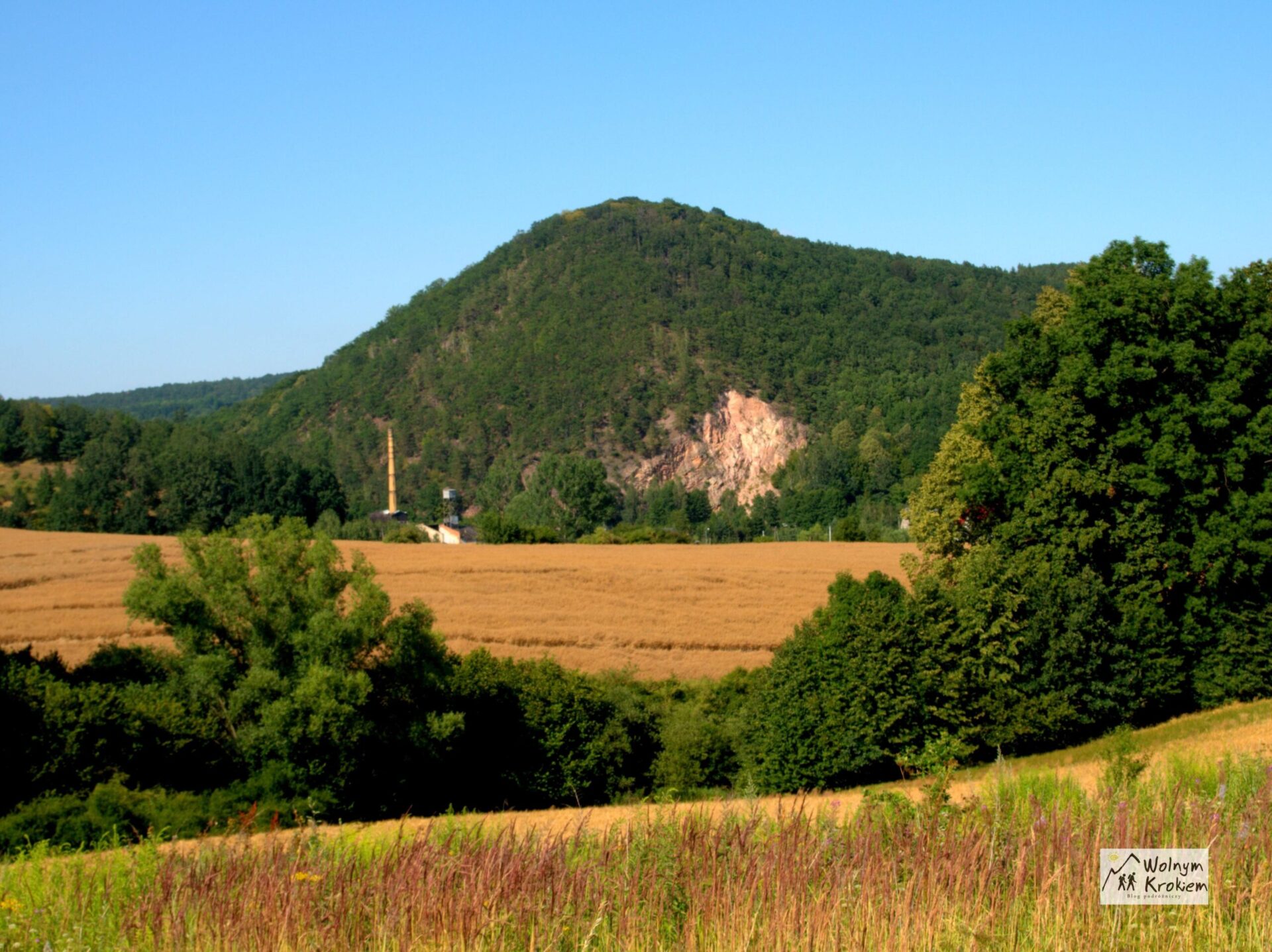
#6 The extinct volcano Stożek Wielki
Our first trip to The Great Cone (Stożek Wielki) was in the winter and we think we recommend you to conquer it at this time. We didn’t think we would ever have to think about using spiked shoe covers in such low mountains… And yet! The ascent of the Big Cone turned out to be one of the more pleasant memories and for this reason we decided to repeat it in the summer as well. We ended up reminiscing with a smile on our faces about the 'critical moments’ in winter, like – Remember how you had to slide down here on your boots to avoid tumbling out? But as someone once described so well – in the winter every mountain is different. There used to be a lookout tower at the top of the Grand Cone and it is possible that a new one could be built in the future. If this happens, we are sure it will guarantee beautiful views of the surrounding area.
Stożek Wielki is located in the Stone Mountains near the village of Unisław Śląski and its peak rises to 841 m above sea level. So why is Ostrzyca Proboszczowicka considered the highest extinct volcano in Poland? We don’t know, but perhaps there is an expert among our audience who can comment on this.
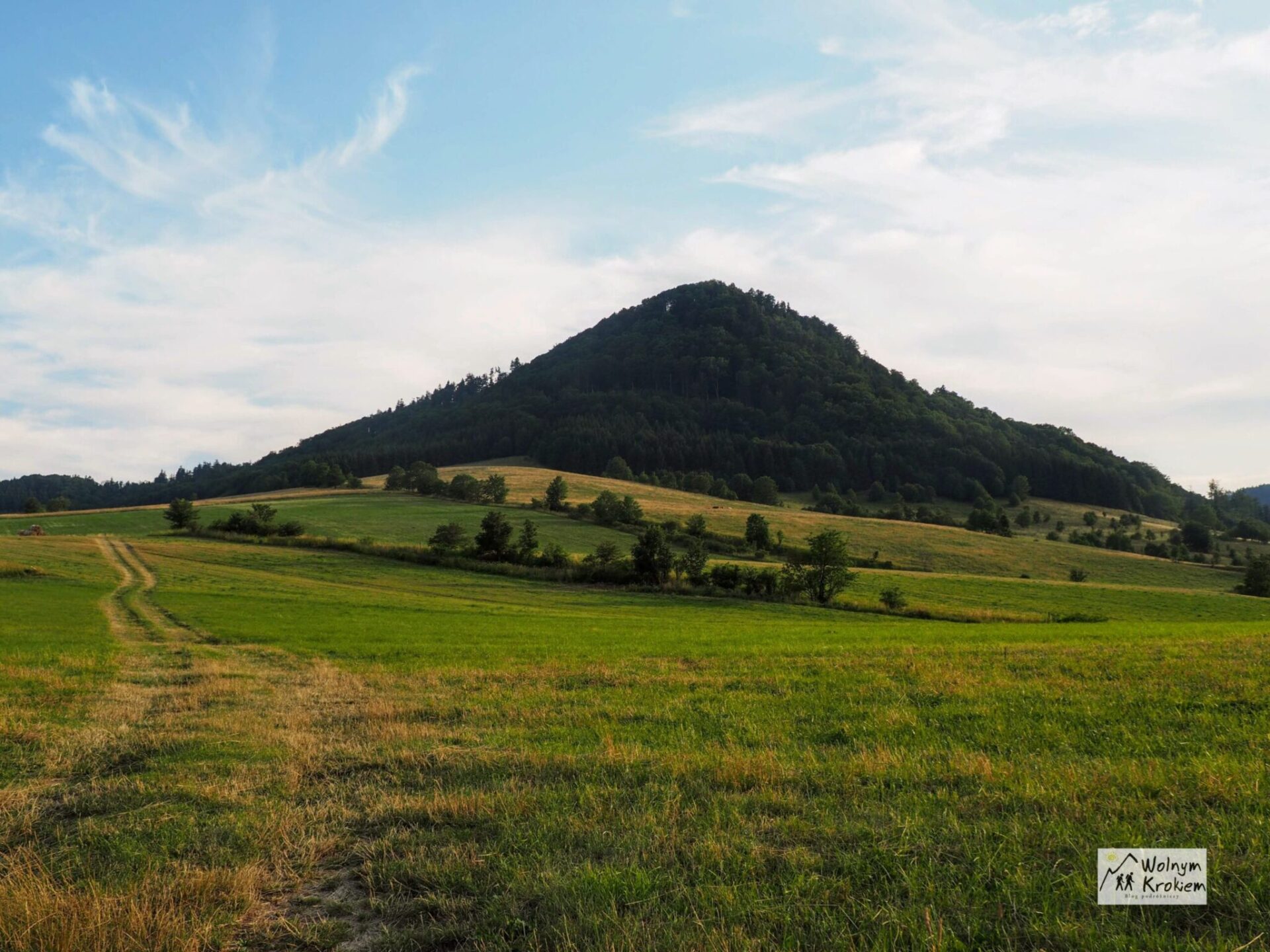
#7 The extinct volcano Radogost
We had already had the pleasure of visiting Radogost when we were doing another project, in which we decided to conquer the lookout towers in Lower Silesia. At that time, however, we did not know that it was an extinct volcano, so we were happy to return to its trail. One thing is certain, too much has not changed here.
The lookout tower still remains heavily dirtied, but the views from the top compensate for these inconveniences. On our way, however, we met a few enthusiasts cycling down from the top of the mountain. They used specially prepared trails with various jumps.
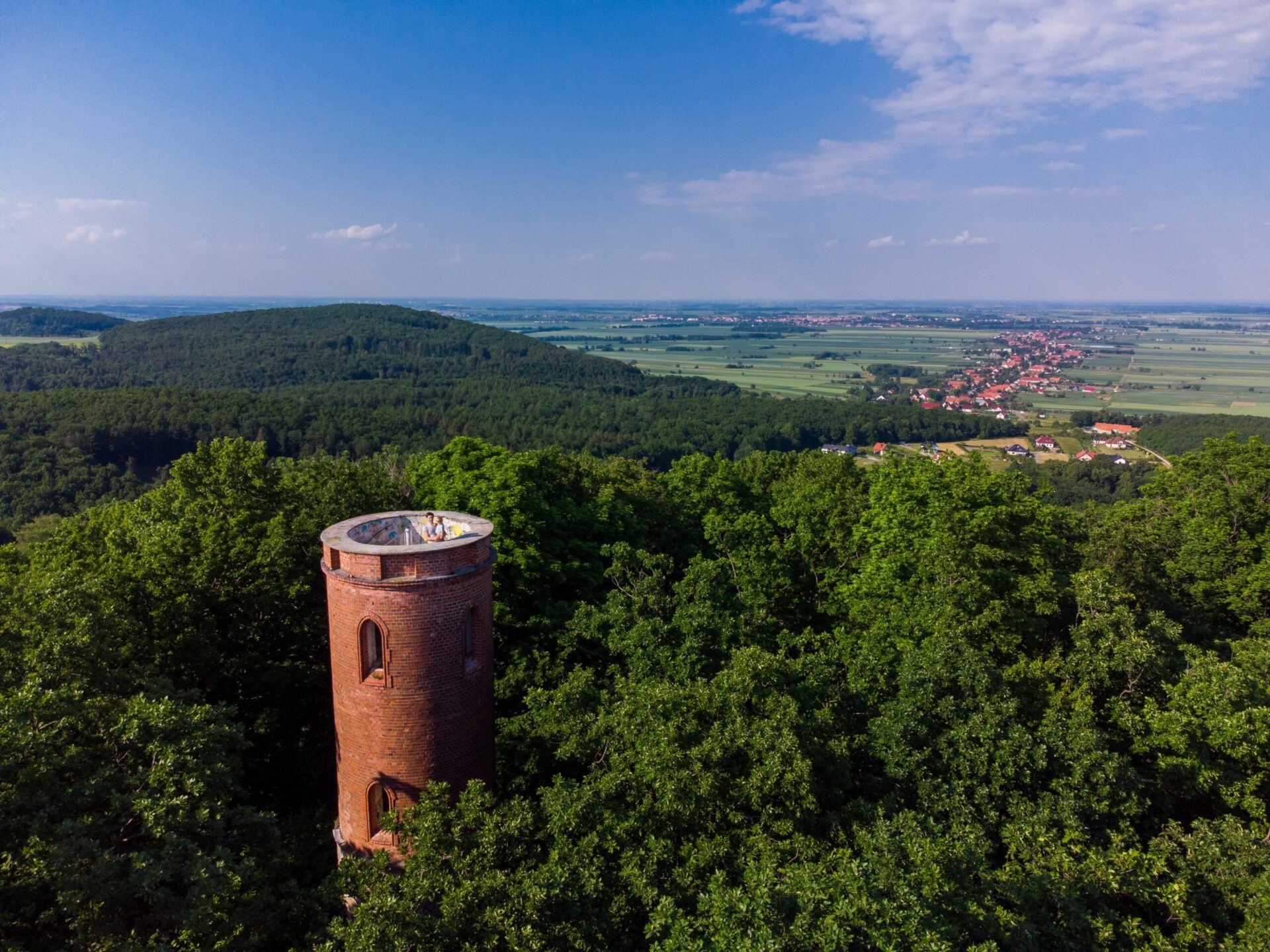
#8 Extinct volcano Basalt Mountain
We had visited Basalt Mountain a few months earlier, when Agnieszka was pregnant with Leoś. We didn’t think we would return to his route in such a short time, but we did. Basalt Mountain is located right next to Radagost, near the village of Paszowice. The climbing of this peak is very easy, especially for parents with children. It is not characterised by very steep climbs, and on its summit you can see both a lookout tower (twin to the one on Radagost) and an overgrown former basalt pit. There are not many viewpoints along the route, and the views from the lookout tower are more likely to satisfy only ornithologists wanting to see the „secret life of birds among the treetops”.
However, it is worth a trip to the summit if you want to spend an active afternoon, or combine it with climbing Radogost – then you’ll be entertained for several hours and conquer two extinct volcanoes 😉 .

#9 The extinct volcano Okole
Okole is another mountain that, in our opinion, becomes more charming when conquered in winter. The trail itself is not too demanding, and the steadily ascending elevation makes it an accessible peak even with children in the summer. Of course every parent is perfectly capable of determining their child’s physical abilities themselves, but if all signs in the earth and sky say that you are prepared to set off with your little toddler into the mountains, then Okole may seem like the right choice. If you tell your child that you are going on a trip to see a hunting lodge, climb an extinct volcano and climb an observation deck, won’t this make your child want to go on such a trip himself? We would!
Okole is located in the Kaczawskie Mountains near the village of Chrośnica. Its highest point is 718 m above sea level and the eminence of the mountain is 181.
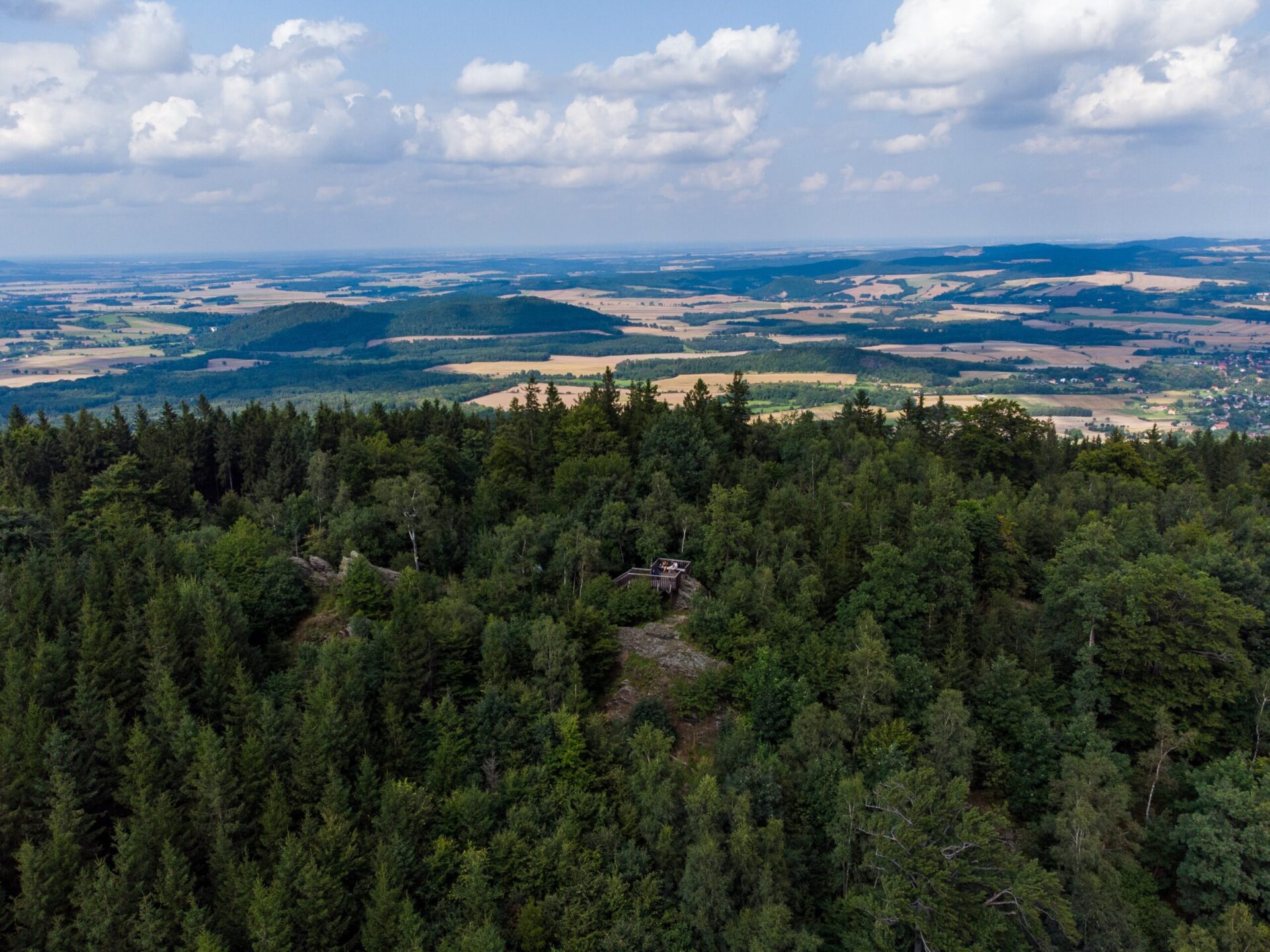
#10 The extinct volcano Czartowska Skała
Czartowska Skała is a small mountain just a dozen minutes’ hike from the road. Is it worth crossing it off straight away because of this? Of course not! Its charm lies in the fact that the characteristically protruding rocks are actually the remains of a volcanic chimney. It provides a brilliant viewpoint over the surrounding area. Another advantage of this extinct volcano is the lack of tall trees near the summit. As a result, nothing obscures the views of the surrounding area. Below the summit, there is also a remnant of a pit where rock formations reminiscent of the Myśliborski Organs can be seen. We think that despite its small size, Czartowska Skała will be an attraction for many of you.
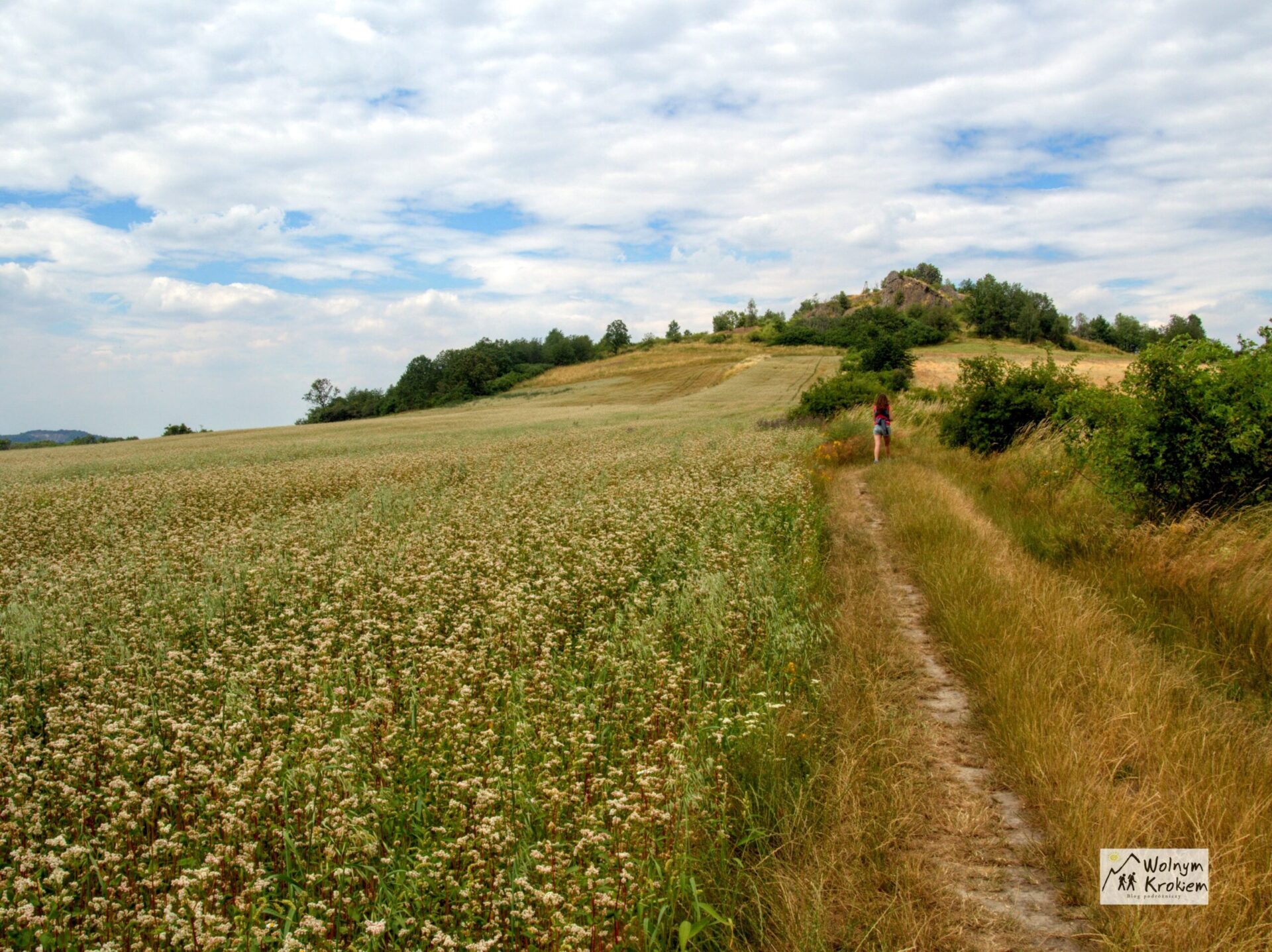
Interactive map with location of extinct volcanoes in Lower Silesia
As always, we include an interactive map in our posts to help you locate individual peaks. Maybe you will be able to include one of them in your tour of Lower Silesia, or maybe, like us, you will become a hunter of extinct volcanoes. We also realise that these are not all the mountains of volcanic origin, but we have tried to present the more popular ones in the Lower Silesian region.
How did you like this combination of non-obvious places? We particularly like the extinct volcanoes because of our current living situation, which was enhanced by little Leoś. We are glad that there are mountains for everyone in the Lower Silesian Voivodship and if you want to start your adventure with low peaks, Extinct Volcanoes will certainly be a good start for you.
This is the first entry in the 2nd Tourist Blogger Championship organised by the Polish Tourist Organisation, in which 16 bloggers represent their voivodship in Poland. We are proud to represent Lower Silesia, as we have been promoting various Lower Silesian tourist attractions for several years now, and there is a sizeable collection of them on our blog. So we invite you to visit the beautiful secrets of Lower Silesia.
The Lower Silesian Tourist Organisation is a partner of this article.
